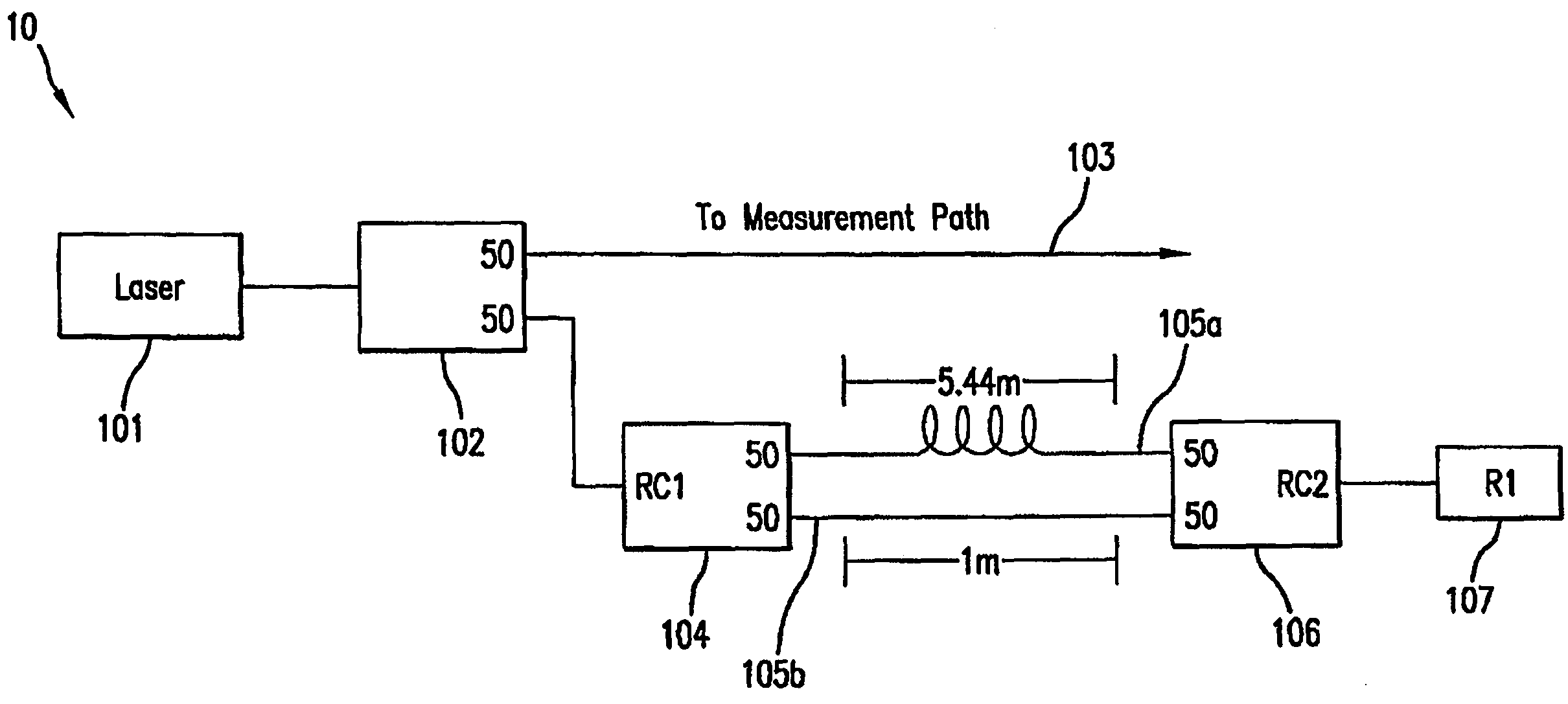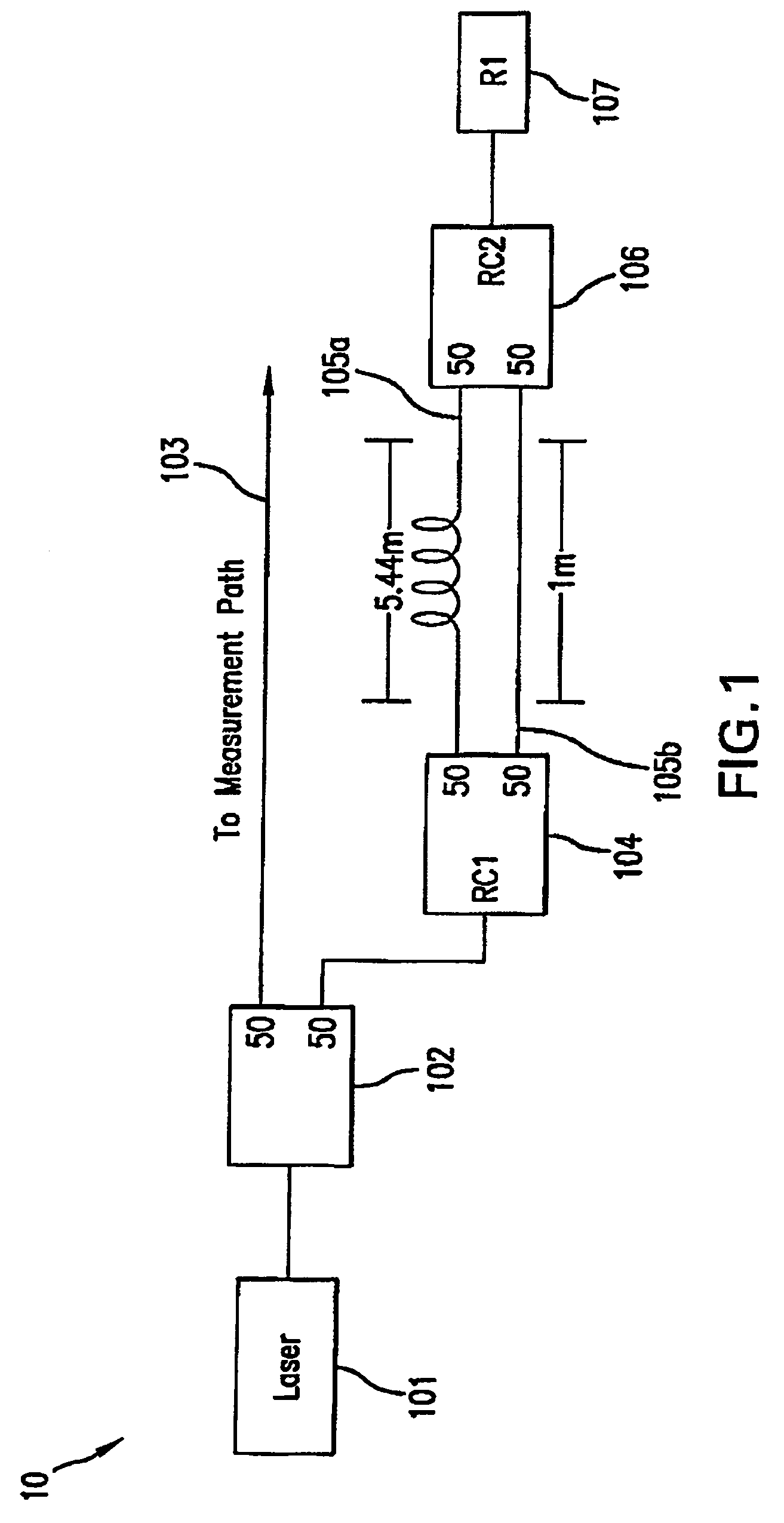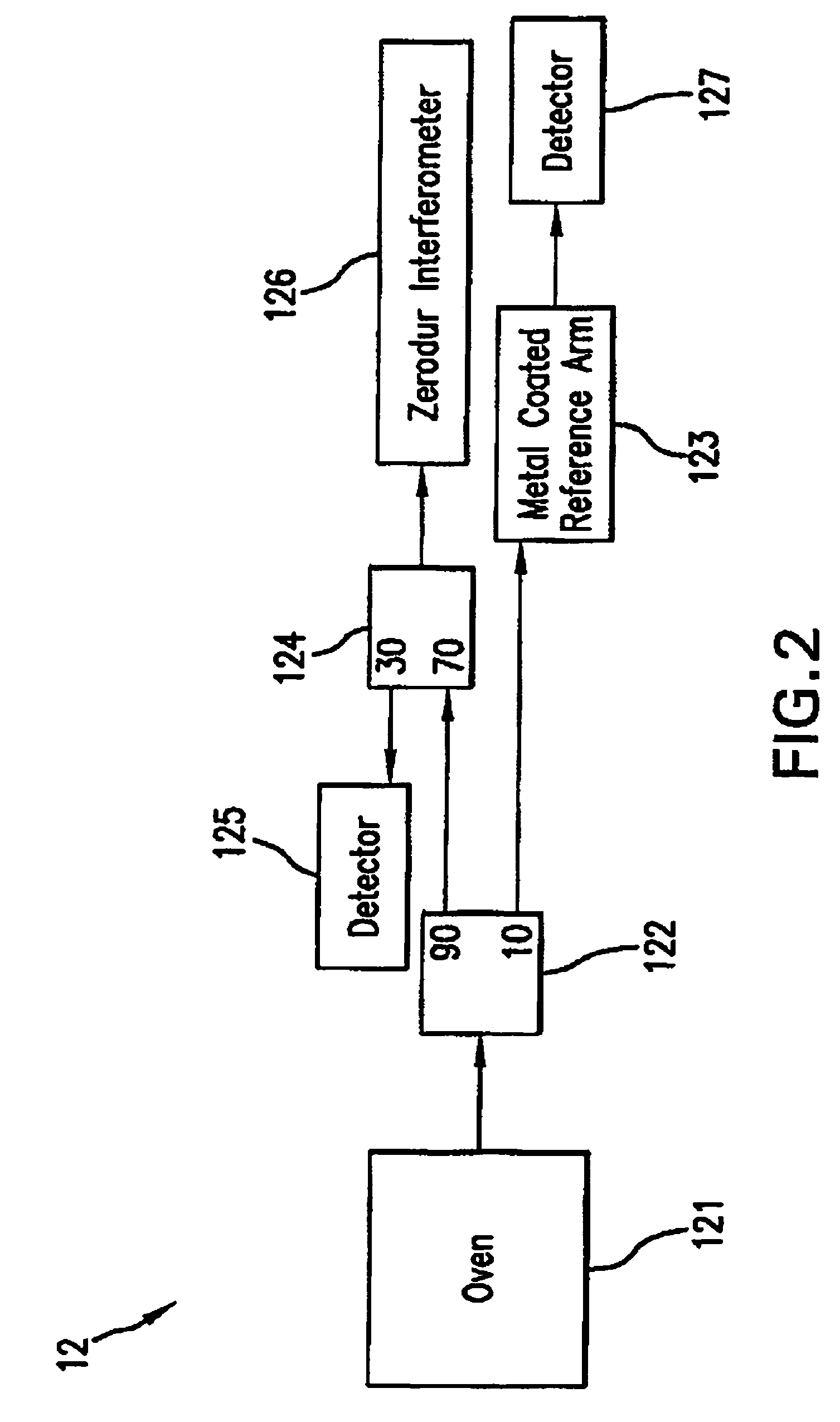Precision length standard for coherent laser radar
a laser radar and precision length technology, applied in the field of precision length standards for coherent laser radars, can solve the problems of acrylate-coated fiber variations, low temperature ratings of acrylates, and outgassing of acrylates, so as to reduce the desirability of polyimide, improve the vapor absorption and outgassing properties, and reduce the effect of acrylate outgassing
- Summary
- Abstract
- Description
- Claims
- Application Information
AI Technical Summary
Benefits of technology
Problems solved by technology
Method used
Image
Examples
examples
During the production process, the 50 / 50 fiber optic couplers are fitted with output fibers coated in polyimide. When the reference arm is built, only fiber coated with polyimide is used, resulting in a reference arm whose drift will be minimized due to the absorption on or outgassing of the fiber jacket. The thin polyimide coating exhibits a marked improvement over the acrylate, resulting in an order of magnitude improvement over the old technology. The improved performance can be easily demonstrated by comparison with the calculation above. With the improved coating, the reference path increases by 4 microns, or 1 PPM. This gives scaling factors of 0.575000 and 0.574999425 MHz / m. At the 10-meter range, the drifted value is only 10 microns from the assumed value in comparison to 100 microns before, or an improvement of about a factor of 10 in precision over the conventionally coated fiber.
In order to test the relative range drift of an MV200™ (i.e., portable coherent laser radar sy...
PUM
 Login to View More
Login to View More Abstract
Description
Claims
Application Information
 Login to View More
Login to View More - R&D
- Intellectual Property
- Life Sciences
- Materials
- Tech Scout
- Unparalleled Data Quality
- Higher Quality Content
- 60% Fewer Hallucinations
Browse by: Latest US Patents, China's latest patents, Technical Efficacy Thesaurus, Application Domain, Technology Topic, Popular Technical Reports.
© 2025 PatSnap. All rights reserved.Legal|Privacy policy|Modern Slavery Act Transparency Statement|Sitemap|About US| Contact US: help@patsnap.com



